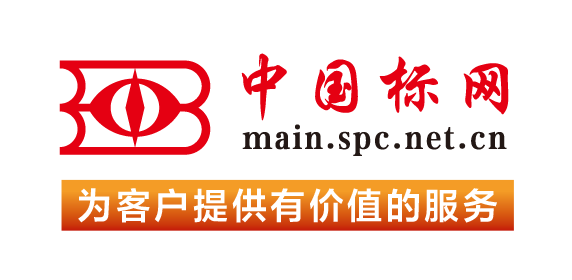【国外标准】 Standard Practice for Evaluation of Disbonding of Bimetallic Stainless Alloy/Steel Plate for Use in High-Pressure, High-Temperature Refinery Hydrogen Service
本网站 发布时间:
2024-02-28
开通会员免费在线看70000余条国内标准,赠送文本下载次数,单本最低仅合13.3元!还可享标准出版进度查询、定制跟踪推送、标准查新等超多特权!
查看详情>>
适用范围:
5.1 This practice provides an indication of the resistance or susceptibility, or both, to HID of a metallurgically bonded stainless alloy surface layer on a steel substrate due to exposure to hydrogen-containing gaseous environments under HP/HT conditions. This practice is applicable over a broad range of pressures, temperatures, cooling rates, and gaseous hydrogen environments where HID could be a significant problem. These procedures can be used to assess the effects of material composition, processing methods, fabrication techniques, and heat treatment as well as the effects of hydrogen partial pressure, service temperature, and cooling rate. The HID produced by these procedures may not correlate directly with service experience for particular applications. Additionally, this practice does not address the evaluation of high-temperature hydrogen attack in the steel substrate. Typically, longer exposure times at the test conditions must be utilized to allow for the resistance to decarburization, internal blistering or cracking, or both, to be evaluated.1.1 This practice covers a procedure for the evaluation of disbonding of bimetallic stainless alloy/steel plate for use in refinery high-pressure/high-temperature (HP/HT) gaseous hydrogen service. It includes procedures to (1) produce suitable laboratory test specimens, (2) obtain hydrogen charging conditions in the laboratory that are similar to those found in refinery HP/HT hydrogen gas service for evaluation of bimetallic specimens exposed to these environments, and (3) perform analysis of the test data. The purpose of this practice is to allow for comparison of data among test laboratories on the resistance of bimetallic stainless alloy/steels to hydrogen-induced disbonding (HID).1.2 This practice applies primarily to bimetallic products fabricated by weld overlay of stainless alloy onto a steel substrate. Most of the information developed using this practice has been obtained for such materials. The procedures described herein, may also be appropriate for evaluation of hot roll bonded, explosive bonded, or other suitable processes for applying stainless alloys on steel substrates. However, due to the broad range of possible materials, test conditions, and variations in test procedures, it is up to the user of this practice to determine the suitability and applicability of these procedures for evaluation of such materials.1.3 This practice is intended to be applicable for evaluation of materials for service conditions involving severe hydrogen charging which may produce HID as shown in Fig. 1 for stainless steel weld overlay on steel equipment (see Refs 1 and 2 in Appendix X1). However, it should be noted that this practice may not be appropriate for forms of bimetallic construction or service conditions which have not been observed to cause HID in service.FIG. 1 Conditions of Hydrogen Partial Pressure and Temperature with Demonstrated Susceptibility to Hydrogen Disbonding in Refinery High-Pressure Hydrogen ServiceNOTE 1: Open symbols—no disbonding reported. Filled symbols—disbonding reported.1.4 Additional information regarding the evaluation of bimetallic stainless alloy/steel plate for HID, test methodologies, and the effects of test conditions, materials, and welding variables, and inspection techniques is given in Appendix X1.1.5 The values stated in SI units are to be regarded as standard. No other units of measurement are included in this standard.1.6 This standard does not purport to address all of the safety concerns, if any, associated with its use. It is the responsibility of the user of this standard to establish appropriate safety, health, and environmental practices and determine the applicability of regulatory limitations prior to use. See Section 6 for additional safety information.1.7 This international standard was developed in accordance with internationally recognized principles on standardization established in the Decision on Principles for the Development of International Standards, Guides and Recommendations issued by the World Trade Organization Technical Barriers to Trade (TBT) Committee.
标准号:
ASTM G146-01(2018)
标准名称:
Standard Practice for Evaluation of Disbonding of Bimetallic Stainless Alloy/Steel Plate for Use in High-Pressure, High-Temperature Refinery Hydrogen Service
英文名称:
Standard Practice for Evaluation of Disbonding of Bimetallic Stainless Alloy/Steel Plate for Use in High-Pressure, High-Temperature Refinery Hydrogen Service标准状态:
Active-
发布日期:
-
实施日期:
出版语种:
- 推荐标准
- ASTM 51401-21 Standard Practice for Use of a Dichromate Dosimetry System
- ASTM 51956-21 Standard Practice for Use of a Thermoluminescence-Dosimetry System (TLD System) for Radiation Processing
- ASTM A1010/A1010M-24 Standard Specification for Higher-Strength Martensitic Stainless Steel Plate, Sheet, and Strip
- ASTM A1016/A1016M-24 Standard Specification for General Requirements for Ferritic Alloy Steel, Austenitic Alloy Steel, and Stainless Steel Tubes
- ASTM A105/A105M-24 Standard Specification for Carbon Steel Forgings for Piping Applications
- ASTM A1064/A1064M-24 Standard Specification for Carbon-Steel Wire and Welded Wire Reinforcement, Plain and Deformed, for Concrete
- ASTM A108-24 Standard Specification for Steel Bar, Carbon and Alloy, Cold-Finished
- ASTM A1080/A1080M-24 Standard Practice for Hot Isostatic Pressing of Steel, Stainless Steel, and Related Alloy Castings
- ASTM A1090/A1090M-19(2024) Standard Specification for Forged Rings and Hollows for Use as Base Plates in Power Transmission Structures
- ASTM A1115/A1115M-24 Standard Practice for Construction of Mechanically Stabilized Earth Walls with Inextensible Soil Reinforcement
- ASTM A1128-24 Standard Specification for Stainless Steel Shielded, Rubber Gasketed Couplings Having an Integral Restraint Feature for Joining Hubless Cast Iron Soil Pipes and Fittings Where External Restraint Is Required
- ASTM A179/A179M-24 Standard Specification for Seamless Cold-Drawn Low-Carbon Steel Heat-Exchanger and Condenser Tubes
- ASTM A234/A234M-24 Standard Specification for Piping Fittings of Wrought Carbon Steel and Alloy Steel for Moderate and High Temperature Service
- ASTM A242/A242M-24 Standard Specification for High-Strength Low-Alloy Structural Steel
- ASTM A249/A249M-24a Standard Specification for Welded Austenitic Steel Boiler, Superheater, Heat-Exchanger, and Condenser Tubes
 我的标准
我的标准 购物车
购物车 400-168-0010
400-168-0010














